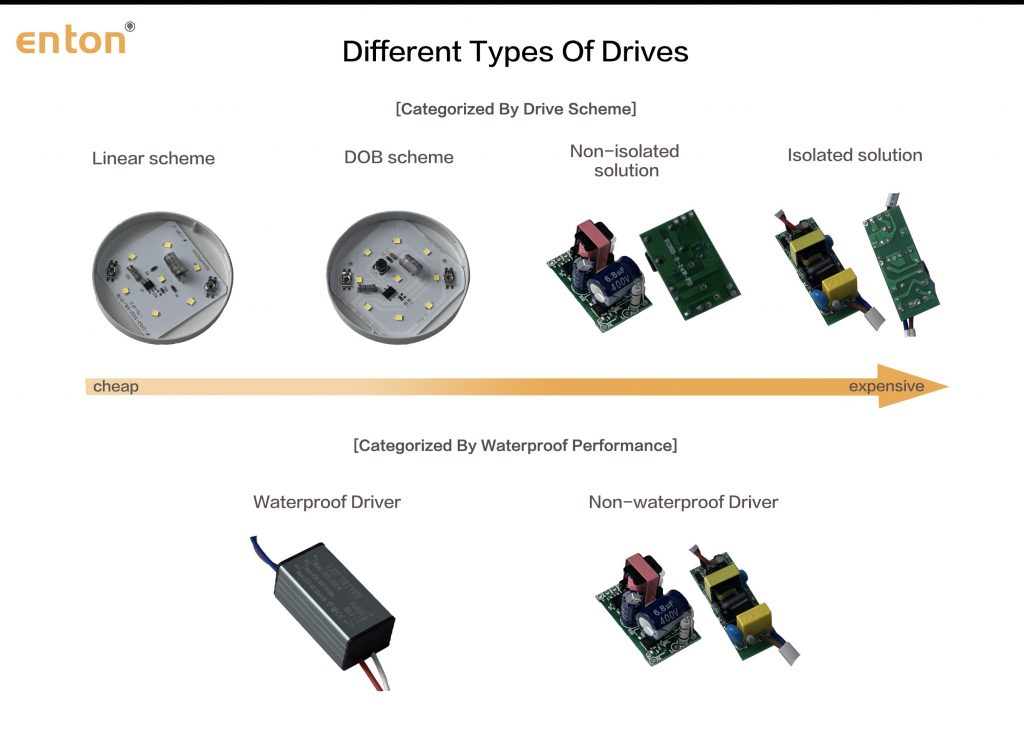When it comes to lighting, the performance and functionality of light drivers play a crucial role. In this blog, we’ll explore the differences among various light drivers to help you make informed decisions for your lighting needs.
Here is a image to show the cost of light drivers from low to high.

1. Linear Scheme
The linear scheme driver is a straightforward and simple option. It provides a relatively stable output current, making it suitable for applications where consistent lighting is essential. However, it might have limitations in terms of efficiency and power handling capacity. For instance, in small-scale indoor lighting setups like desk lamps, linear scheme drivers can do the job adequately.
2. Dob Scheme
The Dob (Driver on Board) scheme is becoming increasingly popular. It integrates the driver directly onto the LED board, reducing the overall size and cost. This makes it an attractive choice for compact and cost-sensitive lighting fixtures. An example of its application could be in energy-efficient LED bulbs for home use.
3. Non-Isolated Solution
A non-isolated solution offers higher efficiency and lower cost. However, it poses potential safety risks as there is no electrical isolation between the input and output. This type of driver is often used in industrial lighting where safety measures can be implemented effectively.
4. Isolated Solution
In contrast, an isolated solution provides enhanced electrical safety by separating the input and output circuits. It is preferred in applications where human contact with the lighting fixture is likely, such as in residential and commercial lighting.
5. Waterproof Driver
A waterproof driver is designed to withstand exposure to moisture and water. This makes it ideal for outdoor lighting installations or in environments with high humidity. Think of street lights or landscape lighting that need to endure various weather conditions.
6. Non-Waterproof Driver
Non-waterproof drivers, on the other hand, are suitable for indoor or protected locations where there is no risk of water exposure. They are commonly used in office lighting or indoor decorative fixtures.
Understanding the differences between these light drivers is essential to select the right one for your specific lighting project. Consider factors such as application environment, safety requirements, and cost when making your choice.
Here is a video made by our colleague Elias to show the differenence of light drivers.
Hope this article has provided you with valuable insights into the world of light drivers!
If you are looking for light supplier and you can’t confirm which light driver suitable for your environment and budget, please contact our team.



